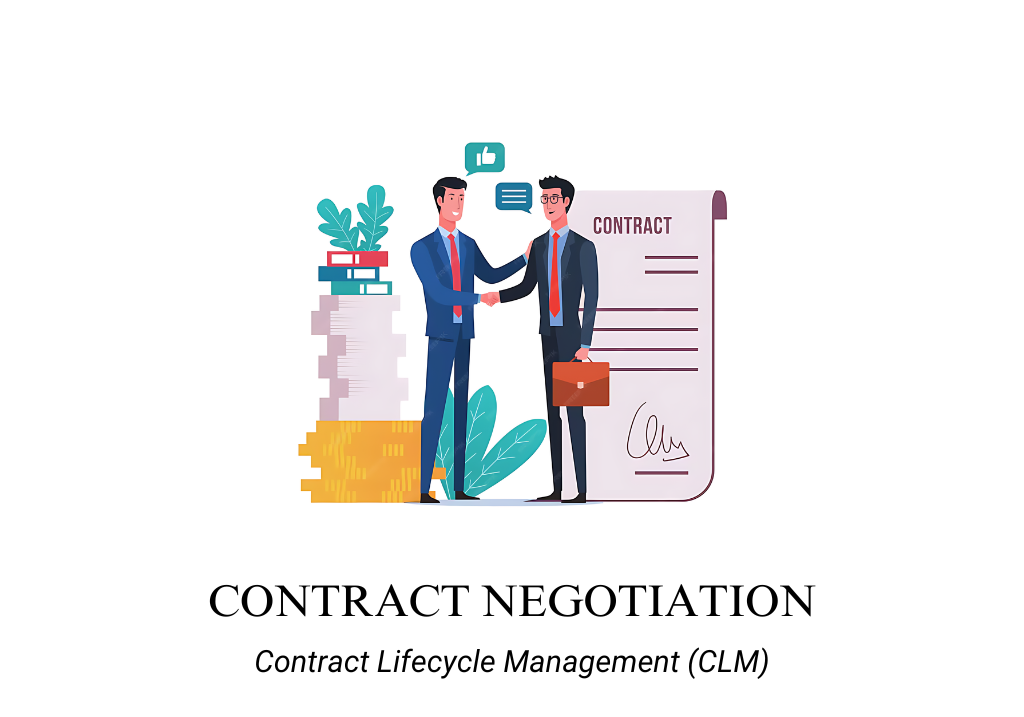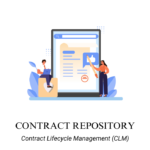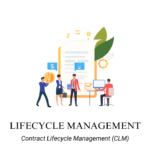Introduction
Contract Negotiation is a crucial functionality within Contract Lifecycle Management (CLM) tools, designed to facilitate effective collaboration between parties during the negotiation process. This functionality enables stakeholders to review, discuss, modify, and finalize contract terms in a streamlined and organized manner. By using a CLM tool for contract negotiation, organizations can reduce negotiation time, improve communication, and ensure that all parties are aligned on the terms and conditions of the contract.
The Contract Negotiation functionality within a CLM tool provides a collaborative environment where stakeholders can easily share documents, add comments, and track changes in real-time. This not only enhances transparency and accountability but also helps maintain a clear record of the negotiation process, which is essential for compliance and future reference.
Features of Contract Negotiation
Collaboration Workspace
Definition: A collaboration workspace is a secure, centralized online environment within a CLM tool that allows multiple stakeholders to work together on contract documents. This feature enables real-time collaboration, document sharing, and joint editing, ensuring all parties are involved in the negotiation process.
Purpose: The purpose of a collaboration workspace is to facilitate seamless communication and cooperation among all parties involved in contract negotiations. It provides a platform where stakeholders can review documents, suggest changes, and finalize contract terms efficiently and effectively.
Use Case: A tech company uses the collaboration workspace feature in its CLM tool to negotiate software licensing agreements with a new client. Both the company’s legal team and the client’s representatives can access the same contract document, propose changes, and discuss terms directly within the workspace, streamlining the negotiation process.
Benefits:
- Enables real-time collaboration among stakeholders, reducing the time required for negotiations.
- Provides a secure environment for sharing and editing contract documents.
- Ensures all parties have access to the most up-to-date version of the contract.
- Facilitates transparency and accountability by keeping a clear record of all changes and discussions.
Comments and Annotations
Definition: Comments and annotations are features that allow users to add notes, feedback, and suggestions directly onto contract documents within the CLM tool. This enables stakeholders to provide detailed input on specific clauses or sections without altering the main text of the contract.
Purpose: The purpose of comments and annotations is to facilitate clear communication and feedback during the contract negotiation process. This feature allows stakeholders to highlight concerns, suggest revisions, and discuss specific aspects of the contract in a structured manner.
Use Case: A pharmaceutical company uses the comments and annotations feature in its CLM tool to negotiate research agreements with a university. The legal teams from both parties add comments to specific clauses, outlining their concerns and suggestions for revisions. This helps ensure that all feedback is documented and addressed systematically.
Benefits:
- Enhances communication by allowing stakeholders to provide detailed feedback directly on the contract document.
- Improves clarity by enabling users to discuss specific sections of the contract without altering the main text.
- Helps maintain a clear record of all comments and annotations, ensuring all concerns are addressed.
- Streamlines the negotiation process by providing a structured way to discuss and revise contract terms.
Messaging and Emailing
Definition: Messaging and emailing are integrated communication features within a CLM tool that allow users to send messages and emails directly from the platform. This functionality supports ongoing discussions and information sharing related to contract negotiations, without the need to switch between different communication tools.
Purpose: The purpose of messaging and emailing within a CLM tool is to facilitate efficient communication among stakeholders throughout the contract negotiation process. These features enable users to quickly share updates, clarify questions, and keep all parties informed in a centralized manner.
Use Case: A construction company uses the messaging and emailing feature in its CLM tool to negotiate a subcontractor agreement. The project manager sends an email to the subcontractor directly from the platform to discuss a proposed change in contract terms, while the subcontractor replies with additional questions via the messaging feature. This keeps all communication centralized and organized.
Benefits:
- Enhances communication by providing integrated messaging and emailing features within the CLM tool.
- Reduces the need to switch between different communication platforms, improving efficiency.
- Keeps all negotiation-related communications organized and easily accessible within the CLM system.
- Facilitates faster decision-making by enabling quick exchanges of information and updates.
Guide to find best Contract Lifecycle Management (CLM) for lawyers
CHECK OUT CLM TOOLS ON DIRECTORY OR CLICK HERE


